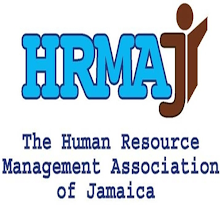Social Scientists throughout generations have
concluded that man is a selfish being, guided mainly by self-interest and the
satisfaction of personal needs. Yet he is also defined as a social animal for
whom the sense of belongingness is paramount. It is this belongingness need
that creates the platform for the development and success of work teams.
Organizations have been trending towards the
acceptance of the team concept, as increasingly, managements as well as
workers, recognize the value of teamwork and buy into the process of team
building.
In his book “The Team Trainer: winning tools and
tactics for successful workouts”, William Gorden reminds us that a cake is more
than eggs, flour and sugar. It is the combination of the ingredients which make
it a cake. This is the idea of synergy - the whole is greater than the
sum of its parts.
Similarly, the organization is greater than its
separate departments. It is the combined efforts of all the departments
and all the people in the departments who work together to achieve common
organizational goals. If the emphasis is on collective responsibility, mutual
accountability, communication, collaboration in goal attainment and
contribution to the organization’s development and success, then that is a
team. (William Gorden 1996)
A team has been defined as “a group of two or more
individuals who interact with and influence each other. Team members are held
together by their interdependence and need for collaboration to achieve common
goals.”
Stages of Team Development:
- FORMING: testing and orientation, a time when members get to know each other and find out what is expected of them.
- STORMING: individuals take on roles and responsibilities, competition is obvious and interpersonal conflicts are played out.
- NORMING: There is a sense of cohesion. Roles are established. Consensus forms around objectives. There are common expectations about accomplishment of goals and members interact more efficiently.
- PERFORMING: Members are more task-oriented. Things shift from establishing and maintaining relationships, to accomplishing objectives. Team members have learnt to coordinate their actions and manage conflicts. In high performance teams, members are highly cooperative, have a high level of trust in each other, are committed to group objectives and identify with the team.
- DORMING: Periods of inactivity or no-growth are common experiences in the process.
- ADJOURNING: most work teams eventually end…if several members leave the organization, are reassigned elsewhere, the plant shuts down or if there are lay-offs.
Is your work group really a TEAM? It may be
interesting and beneficial to evaluate its degree of TEAMNESS.
SIGNS OF TEAMNESS:
- Management asks for team members’ input
- Team members have confidence in management
- Motivation is high
- Team members have a positive attitude towards the organization and its goals
- Communication is open and extensive
- Information flows freely throughout the levels of the organization
- Decision making is shared
- Emphasis is on self-control and problem solving
- Goal setting and performance standards are high but realistic
- The organization is committed to career development through training and job enlargement
- There is Unity of Purpose and Collective Responsibility
- PARTICIPATION IS THE KEY TO EVERYTHING
Well, what is the verdict? Is your work team really a
team or is it just a work group?
By: Shona Heron
HRMAJ - Western Chapter
April 2007



No comments:
Post a Comment